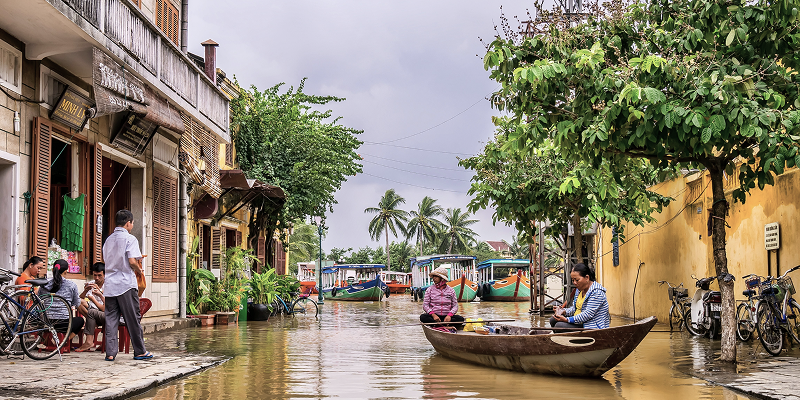Introduction: The Hidden Cost of Waiting
From catastrophic floods in Asia to record-breaking droughts in Africa, the cost of recovering from climate disasters is rising rapidly. According to the World Bank, post-disaster rebuilding can now exceed 5% of GDP in vulnerable countries. With rising material and labor costs, accelerated urbanization, and intensifying climate shocks, traditional relief efforts are struggling to keep pace.
Climate Disasters Are Now More Expensive Than Ever
- Inflation in construction materials and skilled labor has doubled average rebuilding costs over the last decade (UNDRR, 2022).
- Rapid urban expansion means more assets are exposed to flooding including homes, infrastructure, supply chains.
- “Once-in-a-century” events now occur every 10–20 years, driving national economic losses into the tens of billions (IPCC AR6, 2023).
Why Post-Disaster Relief Falls Short?
Relief funds often arrive months after a flood, delayed by slow damage assessments and political bottlenecks. This “protection gap” leaves affected populations without timely cash, stalls recovery, and deepens long-term vulnerabilities. In some cases, only 10–30% of pledged recovery aid is delivered within the critical early phase (World Bank, 2022).
Pre-Disaster Finance: A Paradigm Shift
Pre-disaster finance mobilizes resources before the storm hits, ensuring funds are immediately available when a predefined trigger is met. Key instruments include:
- Parametric Insurance: Automatic payouts based on objective metrics (e.g., rainfall thresholds or river levels), bypassing claims adjusters
- Catastrophe Bonds: Transferring extreme-loss risk to capital markets, with investors bearing losses above set thresholds
- Forecast-Based Financing: Early action grants activated by weather forecasts, enabling rapid evacuation and livestock protection
- Contingency Funds: Pre-committed public or donor pools earmarked for emergency response
Benefits of Anticipatory Finance
- Rapid Liquidity: Immediate funds reduce evacuation time and limit damage
- Predictable Budgets: Fixed-trigger payouts allow governments and businesses to plan with confidence
- Social Protection: Quick support for smallholder farmers, MSMEs, and informal workers
Market Confidence: Embedding climate risk tools in corporate strategies attracts investors and strengthens supply chains
A Shift from Response to Preparedness
The global discourse is shifting. Frameworks like the Sendai Framework for Disaster Risk Reduction and initiatives led by the UN, World Bank, and regional actors increasingly advocate for anticipatory action and risk-layered financing. The goal: move from reactive recovery to proactive resilience.
Incorporating climate-smart financial tools such as parametric insurance is no longer a niche strategy, it’s becoming a standard for sustainable risk management.
Act Before It Strikes
The economics are clear: the cost of doing nothing is rising, and traditional recovery is no longer viable on its own. Whether it’s a government protecting public infrastructure, a farmer securing a harvest, or a business safeguarding operations—investing in pre-disaster finance is a strategic imperative.
When every flood, drought, or cyclone costs more than the last, the smartest response is one that begins before the disaster does.

